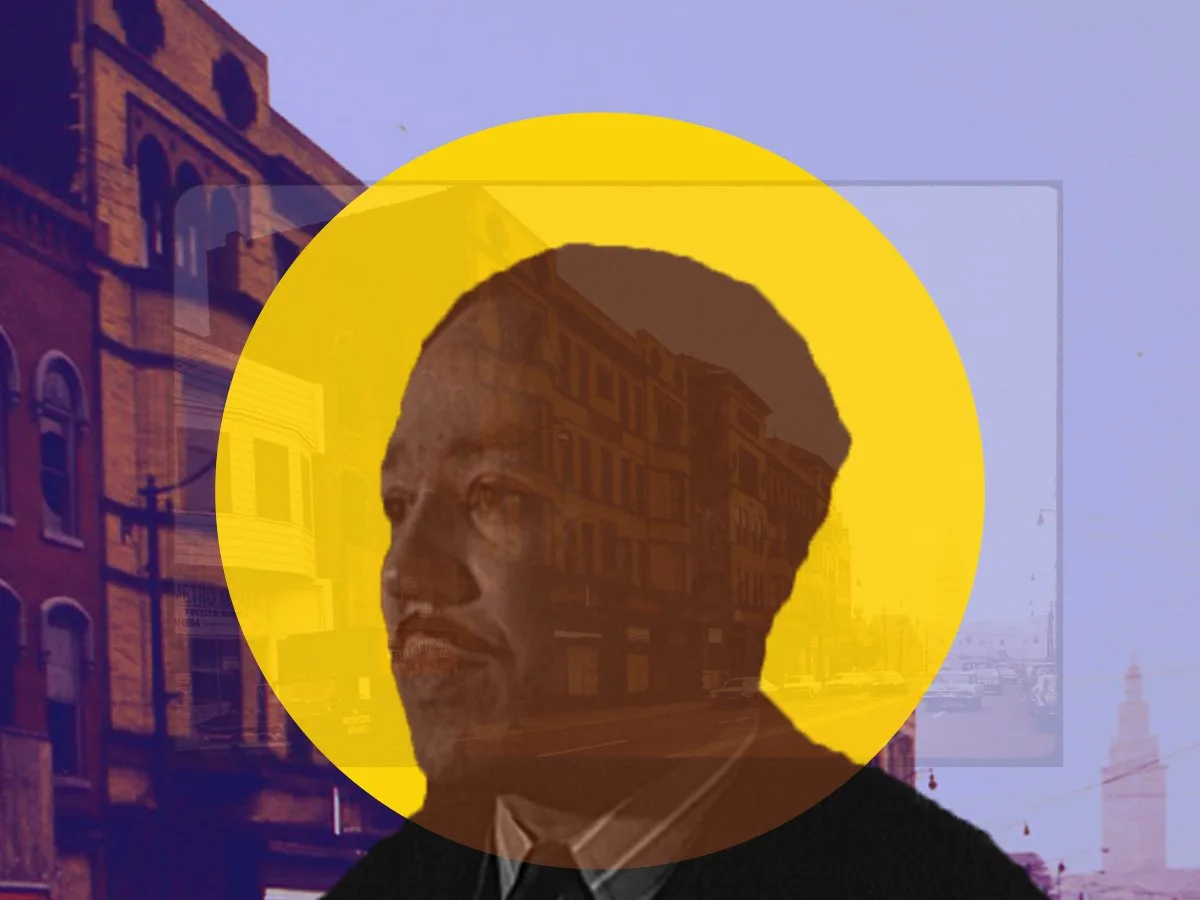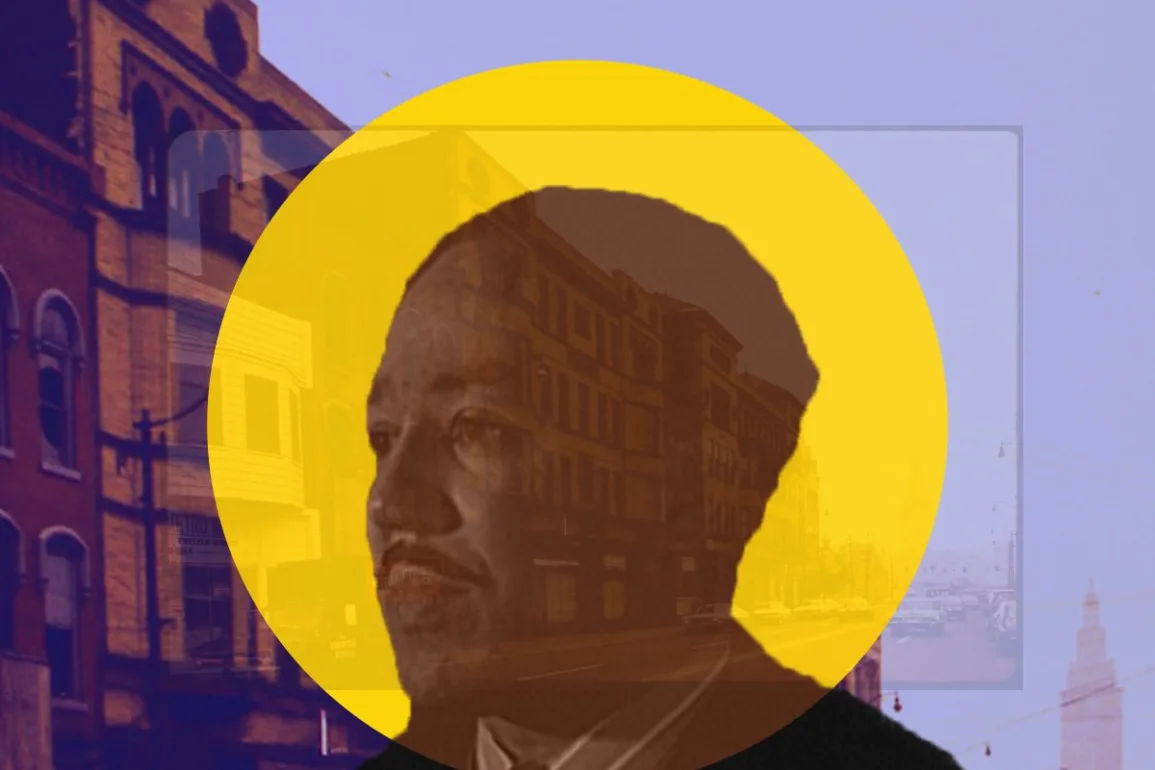
By Taylor Dorrell
What would have become of the famous American poet Langston Hughes had he not attended Cleveland’s Central High School during those turbulent years of 1916 and 1920? Would the young man would have taken up poetry if not for Ethel Weimer’s second year English course where he was taught the works of Amy Lowell, Edgar Lee Masters, Vachel Lindsay, and most crucially for the young Hughes, Chicago’s proletariat poet Carl Sandburg? It’s impossible to know whether or not Hughes’ progressive politics would have blossomed later in adulthood were it not for the friends he made at Central, the children of Cleveland’s radical European immigrants. And it can’t be definitively answered whether Hughes would’ve written as many plays as he did were it not for Cleveland’s Karamu House, a thriving African-American theater. What is known, and what is not up for speculation, is the fact that the great Midwestern state of Ohio played a significant role in transforming Hughes into one of the most notable African American poets of the twentieth-century.
Act I: Cleveland
In his youth, Langston Hughes life was chaotic. His father left his family for Mexico; his Mother traveled constantly to find work; he lived in and out of poverty, often with his grandmother, moving from Missouri to Kansas, from Kansas to Illinois, from Illinois to Ohio, all before graduating high school. But it was his time in Cleveland where his passion for poetry developed most rapidly and thoroughly.
“Although I had read of Carl Sandburg before […] I didn’t really know him until Miss Weimer,” Hughes recalled in his autobiography, The Big Sea (1940). “Then I began to try to write like Carl Sandburg.” One of his first poems written as a teenager in Cleveland read like verse from Sandburg’s industrial Midwestern classic, Chicago:
The mills
That grind and grind,
That grind out steel
And grind away the lives
Of men—
In the sunset their stacks
Are great black silhouettes
Against the sky.
In the dawn
They belch red fire.
The mills—
Grinding new steel,
Old men.
But Hughes also found a inspiration from a closer source, in Paul Laurence Dunbar, a nineteenth-century native of Dayton, claiming that his were the only poems which he enjoyed while growing up. Another of his earliest Cleveland poems flowed seemingly as if out of the dialect of Dunbar’s Lyrics of the Hearthside:
Just because I loves you—
That’s de reason why
My soul is full of color
Like de wings of a butterfly.
Just because I loves you
That’s de reason why
My heart’s a fluttering aspen leaf
When you pass by.
As a child, Hughes transformed Dunbar and Sandburg’s works, adapting them to reflect life in Cleveland. “I wrote about love, about the steel mills where my step-father worked, the slums where we lived, and the brown girls from the South, prancing up and down Central Avenue on a spring day,” Hughes recalled. But he was not limited to the medium of poetry during his tenure at Cleveland Central.
He was also ardently engaged in extracurricular activities, with a letterman’s jacket covered in club pins. “I was on the track team, and for two seasons, my relay team won the city-wide championships. I was a lieutenant in the military training corps. Once or twice I was on the monthly honor roll for scholarship. And when we were graduated, Class of ’20, I edited the Year Book,” he remembered. And naturally, he published many of his early poems for the school’s literary magazine, the Belfry Owl..
In a segregated Cleveland, Hughes was constantly moving between overpriced kitchenette apartments during his four years at Central. “Rents were very high for colored people in Cleveland, and the Negro district was extremely crowded, because of the great migration,” Hughes explained. “Sheds and garages and store fronts were turned into living quarters.” He saw how the living conditions in everyday life for the black population of the city was a physical manifestation of the racist and segregationist politics and economics of the time. “The landlords and the banks made it difficult for them to buy houses, so they had to pay the exorbitant rents required… most of the colored people’s wages went for rent.” Hughes put it best in his poem, “I look at the world”.
I look at the world
From awakening eyes in a black face—
And this is what I see:
This fenced-off narrow space
Assigned to me.
But he also encountered the fleeting cultural beauty and resistance that emerged through the cracks. Cleveland’s Central High School, an ornate Victorian building on Central Avenue (since demolished), hosted a diverse community of European immigrants from Poland, Russia, and Italy, while also serving a growing Black community. “When I was [at Central], it was very nearly entirely a foreign-born school, with a few native white and colored American students mixed in… and most were Catholic or Jewish.” This diverse crowd also made for a hotbed of radical ideas, stirring revolutionary politics in a young Hughes.
Some of his best friends were these very children of foreign-born attendees of Central High – who were, according to the poet, “more democratic” and “less anti-Negro” than “native [born] white Americans.” Hughes attended his first symphony concert in Cleveland with a Jewish girl and her family. Her family lent him Ethe Voynich’s prolific story of a fictional revolutionary, The Gadfly, and the radical French writer Romain Rolland’s Jean Christophe. They gave him copies of monthly socialist magazines like The Liberator and the Socialist Call. They took him to hear Socialist presidential candidate and Indiana native Eugene Debs. Hughes and his classmates knew that it was wrong when Debs got locked up in 1918 and they also knew that Vladimir Lenin had sent reverberations from Russia to the slums of Woodlawn Avenue, “And when the Russian Revolution broke out, our school almost held a celebration,” he recalled.
Act II: Oberlin & Karamu House
The years following graduation involved continuation movement, with Hughes never finding firm residence for more than a year, traveling from one place or job to the next, but always with his dedicated goal being writing. From 1925 to 1930 Hughe’s career prospects improved; he won poetry contests, published his first book, The Weary Blues, his second book, Fine Clothes to the Jew, and his first novel, Not without Laughter, while graduating from Pennsylvania’s Historical Black College Lincoln University. In 1931, after spending Christmas with his mother in Cleveland, he and Zell Ingram, a fellow Cleveland poet who was also a disenchanted student at the Cleveland School of Art conveniently desperate to quit his classes and travel – drove to Florida to and from there they sailed to Cuba and Haiti, witnessing a form of racism distinct yet similar to the US. It was in Haiti where he began writing for the radical magazine, New Masses.
In the 1930s, his adventures eventually landed Hughes back in Ohio, lodging with his distant cousins in Oberlin while he cared for his sick mother. He’d never been to the small town located not far west of Cleveland. He knew few things about Oberlin. His grandmother, Mary Patterson Langston, was an abolitionist and the first Black woman to attend Oberlin College in the mid-19th century. She was married to a free man by the name of Sheridan Leary. When Mary was pregnant, Leary left unexpectedly, saying only that he was going on a trip. He never returned. Leary fought next to John Brown at the historic raid of Harpers Ferry, the precursor to the Civil War in which abolitionists attempted to spark an uprising of the enslaved. “My grandmother said Sheridan Leary always did believe people should be free,” Hughes reflected. She went on to marry a man of similar convictions, Charles Langston, whom she moved with to Kansas, where Hughes’ mother was born.
On his return to Ohio, Hughes engaged with the local theater scene. In the Fairfax neighborhood of Cleveland’s east side is the still-standing Karamu House. Opened in 1915 by two Oberlin College graduates, Russel and Rowena Woodham, the pair sought to establish a space where people of different races, religions, and backgrounds could come together. “The Playhouse Settlement became an active contributor to the Harlem Renaissance, and Langston Hughes roamed the Settlement’s halls constantly,” the Keramu House’s website states. The space is acknowledged as the oldest African-American theater in the United States.
Most of Hughes’ plays were developed and performed at the theater, which premiered many of his works throughout the 1930s. In 1936 and 1937 alone, Karamu House put on a stream of plays almost as quickly as Hughes could write them. This included his farce, Little Ham, a comedy titled Joy to My Soul, and a historical drama about Haiti called Troubled Island. Hughes’ was constantly publishing his works that were able to gracefully balance social criticism and a dream of something new.
The promotion of the American Dream of early 20th century America and the patriotic tendencies of the country’s most reactionary are not Langston Hughes’ world, nor was it for millions of others. Still, Hughes worked with his own words and was a recorder of dreams never reached as a country, as history, than those spoken of by Langston Hughes. His words dance between a plain analysis of the present and a hopefulness for the future, which some of his most popular poems are a testament to:
Let America be the dream the dreamers dreamed—
Let it be that great strong land of love
Where never kings connive nor tyrants scheme
That any man be crushed by one above.
(It never was America to me.)
To Hughes, America has never achieved its potential. Never reached the supposed promises enumerated in the nation’s founding documents. In his poems, America is brutal, it is grim, murderous. But there is also a resounding hope in his works. Hughes’ dual acknowledgement of America’s harsh alienation and its resonant potentialities endure for an American audience today. This cadence was observable from his early days in Cleveland and can be tracked throughout all of his work. It’s up to speculation what would have become of Langston Hughes had he not lived in Ohio for some of those most formative years, but his words and his politics reverberate throughout the nation decades after his death in 1967.
Taylor Dorrell is a freelance essayist, journalist, and photographer based in Columbus, Ohio. He’s a contributing writer at Cleveland Review of Books, a reporter at the Columbus Free Press, and a member of the National Writers Union. You can see all of his work on his website taylordorrell.com.



